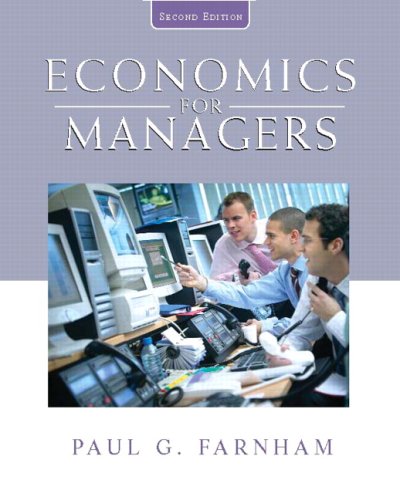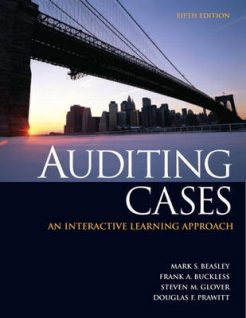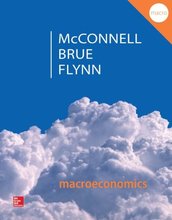Description
- The item being sold is not the textbook. This study guide can be used for your university class / college course or online course / online university / edu online, whether you are studying for your bachelor degree or masters degree. Also great for your short summer courses / summer session.
- Please note that the files are compressed using the program Winzip.
- Files ending with the extension (.pdf) can be opened using Adobe Acrobat Reader.
- Files ending with the extension (.doc) , (.docx) or (.rtf) can be opened using Microsoft Word Viewer 2007.
Solutions to End of Chapter Problems
Farnham, Economics for Managers, 2/e
Chapter 1
Technical Questions
1. Microeconomics focuses on the behavior of individual consumers, firms, and industries as they operate in a market economy. It analyzes how these various groups respond to changes in prices that affect their consumption, production, and selling decisions. It also describes how firms and consumers interact in various types of markets and can be used as a basis for determining competitive strategies. Macroeconomics focuses on the overall economic environment in which businesses operate. It analyzes the spending decisions of different sectors of the economy—the household, business, government, and foreign sectors. Macroeconomic policy deals with the issues of inflation, unemployment, and economic growth. Changes in the macroeconomic environment influence firms through the microeconomic issues of demand, cost, revenues, and profits.
2. Outputs are the final goods and services that firms and industries sell to consumers. Consumers create a demand for all of these goods and services. Inputs are the resources or factors of production that are used to produce the final outputs. Inputs include land, labor, capital, raw materials, and entrepreneurship. Firms’ use of these inputs is related to the demand for their products.
3. The four major types of markets are perfect competition, monopolistic competition, oligopoly, and monopoly. The key characteristics that distinguish these markets are (1) the number of firms competing with each other, (2) whether the products sold in the markets are differentiated or undifferentiated, (3) whether entry into the market by other firms is easy or difficult, and (4) the amount of information available to market participants.
4. In the model of perfect competition, firms are price-takers because it is assumed there are so many firms in each industry that no single firm has any influence on the price of the product. Each firm’s output is small relative to the entire market, so that the market price is determined by the actions of all suppliers and demanders. In the other market models, firms have an influence over the price. If they raise the price of the product, consumers will demand a smaller quantity; if they lower the price, consumers will increase the quantity demanded.
5. In macroeconomics, the five major categories of spending are consumption (C), investment (I), government (G), export (X), and import (M). GDP = C + I + G + X – M. The first four categories are added together, while import spending is subtracted because it represents a flow of expenditure out of the domestic economy to the rest of the world.
6. Fiscal policies are implemented by the national government and involve changing taxes (T) and government expenditure (G) to stimulate or slow the economy. These decisions are made by the political institutions in the country. Monetary policies are implemented by a country’s central bank—the Federal Reserve in the United States. These policies focus on changing the money supply in order to influence interest rates, which then affect real consumption, in-vestment spending, and the resulting level of income and output.
Application Questions
1. When Wal-Mart expanded into Mexico, it had to confront potential resentment from Mexicans about the increased competition from a foreign company, and it had to deal with the powers that controlled local commerce, including the national retailing association, ANTAD, and local bosses, the caciques. The company also had to adapt to local customs, which included finding native-speaking employees and broadcasting announcements in native Indian languages.
2. In April, 2008, the Economist Intelligence Unit predicted that Mexico’s annual GDP growth would gradually accelerate toward a rate of 3.5 percent. However, Mexico’s growth path will continue to be dependent on the U.S. economic cycle. U.S. growth affects not only Mexican gross fixed investment and exports, but also its employment, wages, and private consumption. Mexican economists state that Mexico is the most exposed country in the world to a U.S. slowdown. One of the major impacts on the Mexican economy is the remittance of money from Mexican immigrants working in the United States back to Mexico. The Central Bank of Mexico reported in May 2008 that remittances from the United States dropped 2.9 percent for the first quarter of 2008 compared with the same period in 2007. By fall 2008, the weaker United States economy was lowering Mexico’s growth rate. The Mexican government cut its estimate for GDP growth from 2.8 percent to 2.4 percent. The Mexican central bank also cooperated with the United States Federal Reserve to increase liquidity in the financial system. See “Mexico: Country Forecast Summary,” EIU ViewsWire, April 17, 2008; Jane Bussey, “Mexico Feels Our Economic Pain,” McClatchy-Tribune Business News, April 7, 2008; Miriam Jordan, “Fewer Latino Migrants Send Money Home, Poll Says,” Wall Street Journal, May 1, 2008; “A Slowing Mexican Economy,” EIA ViewsWire, September 23, 2008; and “Crisis Management in Mexico,” EIA ViewsWire, November 12, 2008.
3a. This is a description of a perfectly competitive market. It discusses factors influencing the demand and supply of soybeans, where the focus is on the price and quantity in the entire market, not the decisions of individual producers. It describes the expectation that current high prices will give soybean farmers the incentive to increase production in the future.
b. This paragraph is a description of interdependent oligopoly behavior. General Motors’ strategy of rebates and zero percent financing is matched by Ford and Daimler/Chrysler. Oligopoly firms develop their strategies by anticipating the possible responses of their rivals.
c. This discussion describes the attempt by the U.S. wireless telecommunications industry to gain monopoly or market power through mergers of independent firms. The paragraph notes that the traditional phone industry did have a period of monopoly status when the industry was highly regulated. The monopoly power of the wireless industry is under constant attack from new technologies and an increase in new entrants into the market. Even the merged firms will find their monopoly power under attack.
d. Chinese restaurants represent monopolistic competition. There are 36,000 Chinese restaurants, most of them small, family operations. No national chain dominates these restaurants, largely due to the use of the wok for cooking. Specialized stoves and chefs are required for this type of cooking, which has limited the expansion of these firms into large-scale production.
4. Numerous examples can be found. In general, the more competitive the market is, the more firms will have to rely on reducing the costs of production, as they have less control over price. Firms with market power often use all types of strategies. For example, many restaurants responded to the economic slowdown in 2007 and 2008 by scaling back expansion plans, skimping on items like extra sauce and free sour cream, closing sites, and laying off workers. After examining rivals’ portions of hash browns and french fries and analyzing leftovers, Vicorp, which owns 400-plus Village Inn and Bakers Square restaurants, cut back as much as an ounce from each serving of these foods with a projected annual savings of more than $500,000. See Jeffrey McCracken and Janet Adamy, “Restaurants Feel Sting of Surging Costs, Debt,” Wall Street Journal, April 24, 2008.
5. Examples of these types of strategies are discussed in Chapter 14. Firms lookded for ways to increase productivity and cut costs. Many also developed new pricing strategies to increase their profits or minimize their losses.







Reviews
There are no reviews yet.